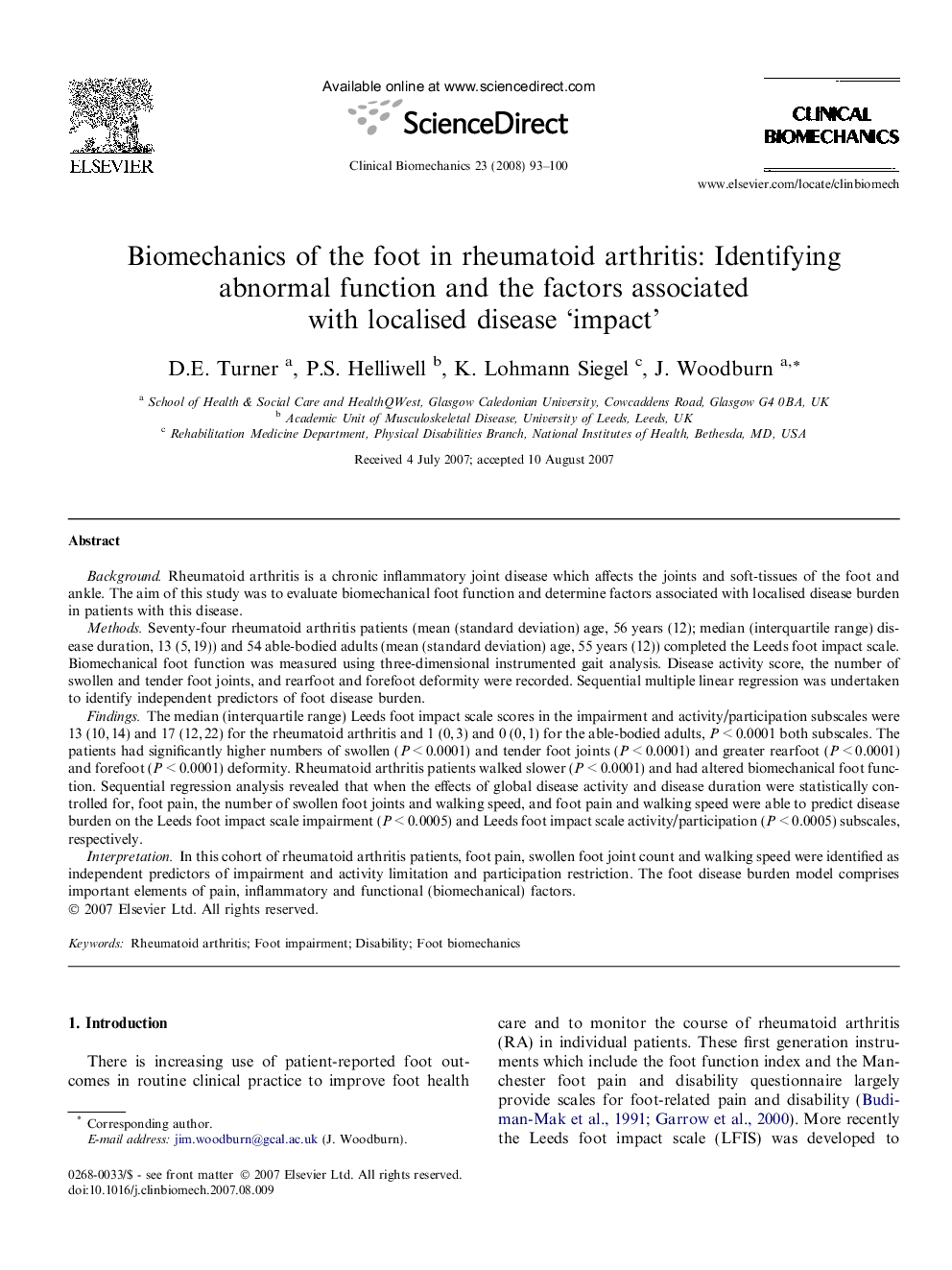| Article ID | Journal | Published Year | Pages | File Type |
|---|---|---|---|---|
| 4051670 | Clinical Biomechanics | 2008 | 8 Pages |
BackgroundRheumatoid arthritis is a chronic inflammatory joint disease which affects the joints and soft-tissues of the foot and ankle. The aim of this study was to evaluate biomechanical foot function and determine factors associated with localised disease burden in patients with this disease.MethodsSeventy-four rheumatoid arthritis patients (mean (standard deviation) age, 56 years (12); median (interquartile range) disease duration, 13 (5, 19)) and 54 able-bodied adults (mean (standard deviation) age, 55 years (12)) completed the Leeds foot impact scale. Biomechanical foot function was measured using three-dimensional instrumented gait analysis. Disease activity score, the number of swollen and tender foot joints, and rearfoot and forefoot deformity were recorded. Sequential multiple linear regression was undertaken to identify independent predictors of foot disease burden.FindingsThe median (interquartile range) Leeds foot impact scale scores in the impairment and activity/participation subscales were 13 (10, 14) and 17 (12, 22) for the rheumatoid arthritis and 1 (0, 3) and 0 (0, 1) for the able-bodied adults, P < 0.0001 both subscales. The patients had significantly higher numbers of swollen (P < 0.0001) and tender foot joints (P < 0.0001) and greater rearfoot (P < 0.0001) and forefoot (P < 0.0001) deformity. Rheumatoid arthritis patients walked slower (P < 0.0001) and had altered biomechanical foot function. Sequential regression analysis revealed that when the effects of global disease activity and disease duration were statistically controlled for, foot pain, the number of swollen foot joints and walking speed, and foot pain and walking speed were able to predict disease burden on the Leeds foot impact scale impairment (P < 0.0005) and Leeds foot impact scale activity/participation (P < 0.0005) subscales, respectively.InterpretationIn this cohort of rheumatoid arthritis patients, foot pain, swollen foot joint count and walking speed were identified as independent predictors of impairment and activity limitation and participation restriction. The foot disease burden model comprises important elements of pain, inflammatory and functional (biomechanical) factors.
